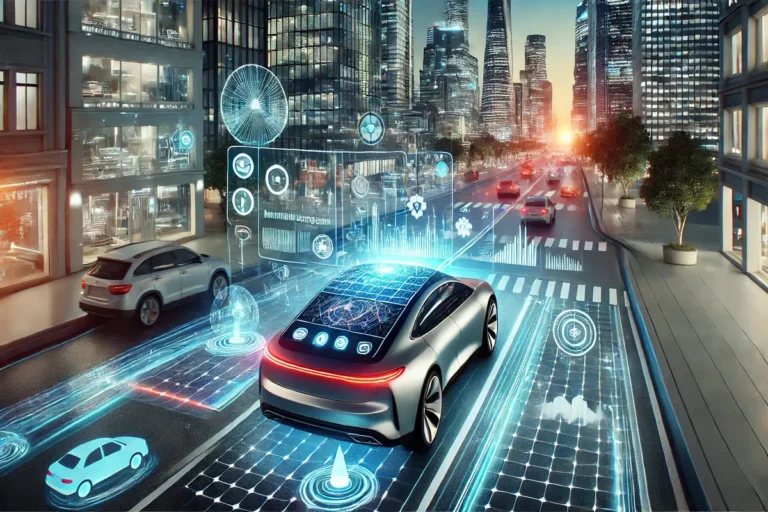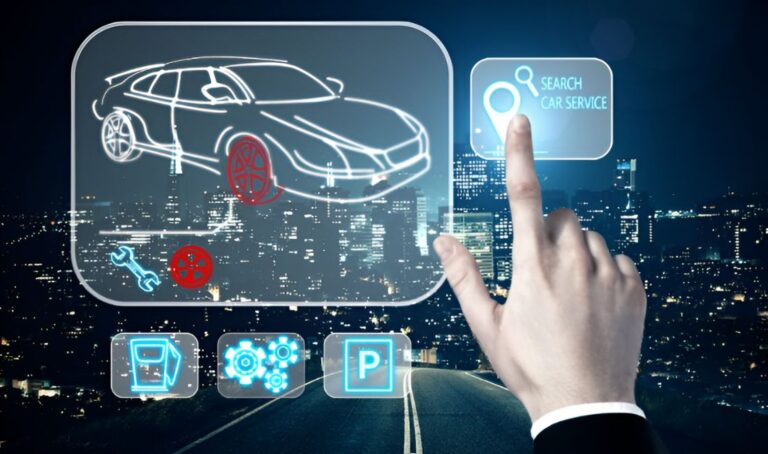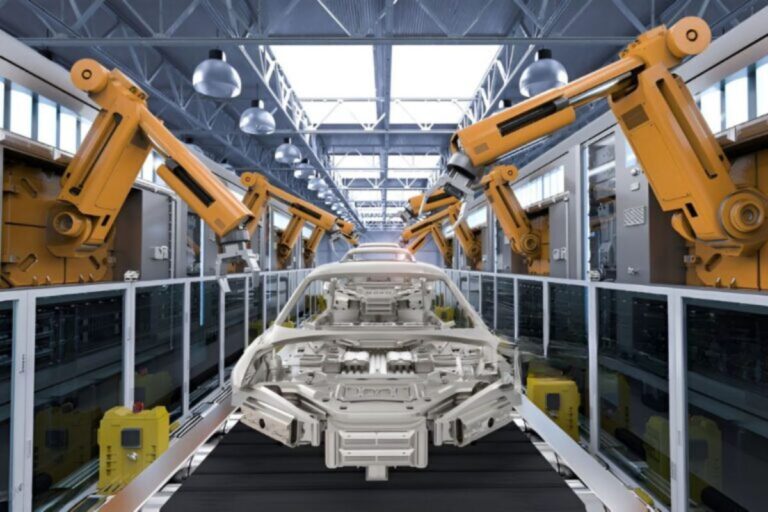If one said an opinion about self-driving cars as a far-off fantasy — the kind of tech wizardry you’d expect in sci-fi films, they would be laughed at.
Fast forward to 2025, and we’re staring at a world where autonomous vehicles (AVs) are not only real but evolving at a rapid speed, thanks to the field of autotronics.
Autotronics — a fusion of automotive engineering and electronics — is the heart and soul behind this transformation.
It governs everything from in-vehicle infotainment to advanced driver-assistance systems (ADAS), and in the case of autonomous vehicles, it’s the brain that makes the car think, see, and react.
In this blog, we’ll explore how autotronics is shaping the landscape of self-driving cars, what’s under the hood (literally and figuratively), and where the future of this rapidly accelerating industry is headed through the views of Sushen Mohan Gupta – a renowned businessman.
Understanding Autotronics: The Brains of the Modern Car
Before diving into autonomous vehicles, let’s break down what autotronics actually encompasses.
Autotronics is an interdisciplinary field that combines elements of:
- Electronics
- Computer engineering
- Mechanical systems
- Sensor technology
- Control systems
This blend enables vehicles to become more than just machines — they become intelligent systems capable of interacting with the environment, processing real-time data, and making split-second decisions.
In conventional vehicles, autotronics handles systems like:
- Engine control units (ECU)
- Anti-lock braking systems (ABS)
- Airbag deployment
- Cruise control
- Parking sensors
- Infotainment systems
In autonomous vehicles, however, autotronics kicks into overdrive — powering everything from LIDAR sensors to real-time data processing through AI algorithms.
Companies like Deva Autotronics is a pioneer in the field and offer many such services.
The Five Levels of Autonomy
To fully appreciate the autotronic innovations behind self-driving cars, it helps to understand the levels of autonomy:
- Level 0 – No Automation: The human driver does everything.
- Level 1 – Driver Assistance: Basic functions like adaptive cruise control.
- Level 2 – Partial Automation: Car can control steering and acceleration, but driver must monitor at all times.
- Level 3 – Conditional Automation: Car can manage most aspects of driving, but driver intervention may be required.
- Level 4 – High Automation: Fully autonomous in specific conditions or geofenced areas.
- Level 5 – Full Automation: No human intervention needed — ever.
Currently, most commercial systems like Tesla Autopilot, GM Super Cruise, and Volvo’s Pilot Assist are hovering between Level 2 and 3. In India, Deva Autotronics is leading in the segment and leaders like Sushen Gupta are visonaries when it comes to taking autotronics forward.
Key Autotronic Systems in Autonomous Vehicles
To achieve higher levels of autonomy, a vehicle must become a real-time decision-making system.
That involves a symphony of autotronics subsystems working together seamlessly.
- Sensor Suite Integration
AVs rely on a host of sensors for environmental awareness:
- LIDAR: Uses lasers to measure distance and create 3D maps.
- RADAR: Detects object speed and distance using radio waves.
- Cameras: Provide visual information for object recognition.
- Ultrasonic Sensors: Help with close-range detection (parking, low-speed maneuvering).
- Inertial Measurement Units (IMU): Monitor acceleration and orientation.
These sensors generate terabytes of data per hour. Autotronic systems gather and process this data, transforming raw input into usable driving decisions.
- Electronic Control Units (ECUs) & Domain Controllers
AVs don’t rely on a single central processor. Instead, they use dozens of ECUs assigned to different tasks — from managing brakes to steering to air conditioning. In modern cars, these are being consolidated into domain controllers — high-power units responsible for specific zones like:
- Powertrain
- Chassis
- Infotainment
- Autonomous systems
This approach reduces complexity and improves data sharing between systems.
- Artificial Intelligence & Machine Learning
The real magic? AI. Deep learning algorithms help the car:
- Identify pedestrians
- Read road signs
- Predict other vehicles’ behavior
- Make navigation decisions
These systems are trained on millions of miles of driving data and continuously learn through experience.
AI chips from companies like NVIDIA, Intel (Mobileye), and Qualcomm power these capabilities in real-time.
- Vehicle-to-Everything (V2X) Communication
For full autonomy, a car must not only understand its surroundings but communicate with them too. V2X includes:
- Vehicle-to-Vehicle (V2V): Cars talk to each other to avoid collisions.
- Vehicle-to-Infrastructure (V2I): Traffic lights, road signs, and construction zones feed info to vehicles.
- Vehicle-to-Cloud (V2C): Cars send and receive updates, maps, and performance data.
Autotronics modules ensure secure, low-latency communication for real-time coordination.
Challenges on the Road Ahead
Despite massive advancements, we’re still a few laps away from fully autonomous highways. Autotronics must tackle several challenges:
- Cost and Complexity
High-end LIDAR sensors alone can cost thousands of dollars. Combine that with computing power, redundancy systems, and the sheer number of sensors — AVs are currently expensive to manufacture. - Cybersecurity Threats
With great connectivity comes great vulnerability. Autotronics must include robust firewalls, encrypted communication, and real-time threat detection to prevent malicious hacks. - Regulatory and Ethical Concerns
Who is responsible in a crash involving a Level 4 or 5 AV? How do you program an AI to make moral decisions in emergency situations? The tech may be ready before the laws (and ethics) are. - Weather & Unpredictable Scenarios
Heavy rain, snow, or fog can interfere with sensors. Construction zones, unexpected detours, and unpredictable human behavior remain massive hurdles for autotronics systems to interpret flawlessly.
What the Future Holds
Autotronics will be the cornerstone of automotive innovation in the next decade. Here’s what we can expect:
- Greater Sensor Fusion: Combining LIDAR, camera, and RADAR data for more reliable decision-making.
- Edge AI Chips: Faster, more efficient processors embedded directly into the vehicle.
- Open-source Platforms: Initiatives like Autoware and Apollo are democratizing autonomous vehicle development.
- Smart Cities Integration: Infrastructure built to communicate with cars, improving traffic flow and safety.
Companies like Tesla, Waymo, NVIDIA, Hyundai, and Baidu are pouring billions into autotronic R&D — and their investment is speeding us toward a future where the car is not just a vehicle, but a co-pilot.
Conclusion
Sushen Mohan Gupta feels, autotronics isn’t just a field — it’s the nervous system of every modern and future-forward vehicle.
From basic sensor data processing to the autonomous driving revolution, Deva Autotronics‘s discipline is driving us into a world where cars don’t just move — they think, respond, and evolve.
Read More Related Blogs:






